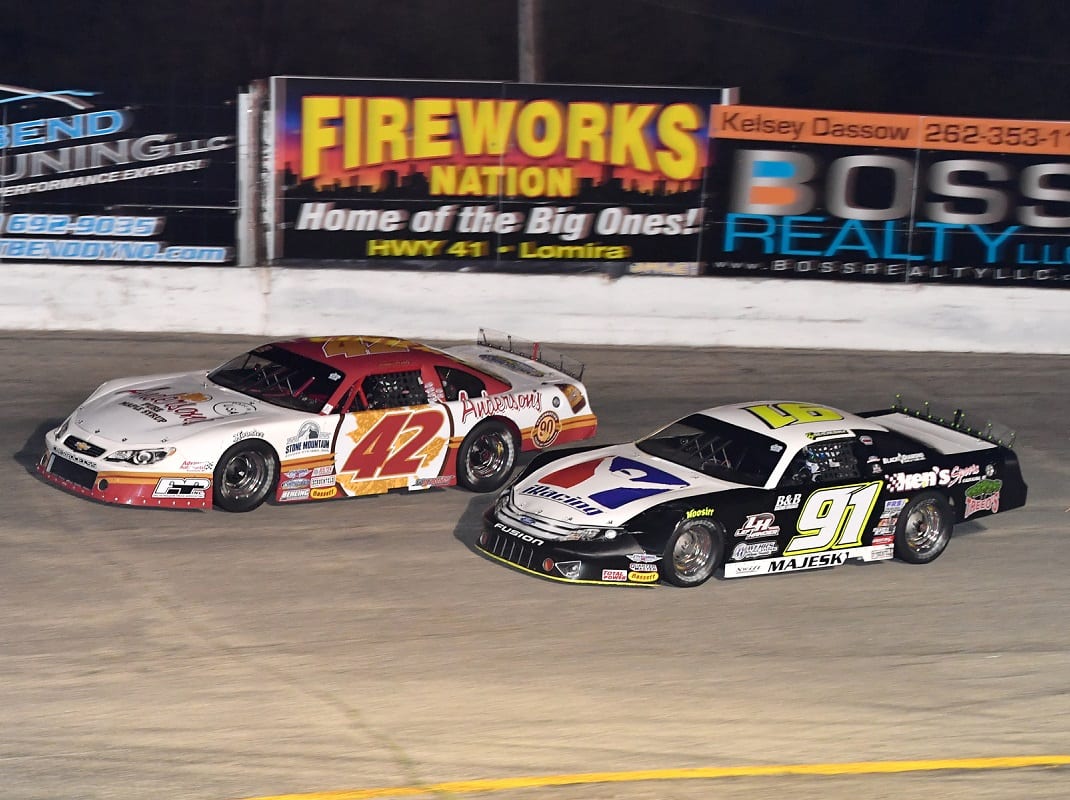When Wayne Erickson, owner of Slinger (Wis.) Super Speedway since 1976, created the Slinger Nationals, it was an attempt to keep the track relevant.
Forty-years later, Slinger Super Speedway is one of the top short tracks in the U.S., with the annual Slinger Nationals as its anchor event.
“In my book, it ranks pretty high up there,” said Erik Jones, a Monster Energy NASCAR Cup Series driver. “When I think of big super late model races, I think of the Slinger Nationals, the Snowball Derby and the Winchester 400.”
Jones, who has competed in the Nationals twice, is not alone when putting high value on the Slinger Nationals.
“Being a Wisconsin guy, it’s definitely in the top three as far as big events go,” said Johnny Sauter, a Necedah, Wis., native and two-time NASCAR Gander Outdoors Truck Series champion. “It’s one fans circle on their calendar, say they need to be there.”
Erickson made two key moves when he purchased the track from Rollie Heder, who had owned the facility since its inception in 1948.
The first was to ditch the relatively flat dirt track and pave it, while also adding 30 degrees of banking. Erickson modeled Slinger after Bristol (Tenn.) Motor Speedway and Indiana’s Anderson Speedway, with the help of some friends who were familiar with the configurations at those tracks.
“Mainly because of speed,” Erickson said when asked why added banking to the revamped Slinger layout.
It was the right decision as the banking offers a difficult element with which many drivers, including some of the best, often struggle. In 2018, just days removed from winning his first Monster Energy NASCAR Cup Series race at Daytona Int’l Speedway, Jones failed to qualify in the top 12 during time trials for the Slinger Nationals. Sauter was also too slow and both had to race their way into the field.
“It’s tough; it’s very tough,” Jones said. “It just shows you the local guys are really good. It makes it tough to make the field. There are a lot of good cars that show up. I’d say there are 20-25 really good cars that enter that race every year and to make the top 12 in qualifying is tough because it’s so tight. You’re talking about a tenth-of-a-second probably from first to 12th, or less than that. Any mistake on your laps can make a big difference.”
Sauter said, “A lot of things I’ve applied at other tracks have not worked at Slinger.”
Erickson’s second key decision came in 1980. At that time, regional and national touring series such as ARTGO and ASA were gaining popularity and drawing some of the best names in short-track racing. Erickson noticed it was hurting attendance at Slinger.
One driver who was bringing in fans to tracks all across the state and the country was Wisconsin-born Dick Trickle.
Erickson consistently hounded Trickle to race at Slinger Super Speedway. Trickle said he couldn’t because his schedule was too busy. But Trickle gave Erickson an opening, telling him if he could create a race for a Tuesday night, he would make it work. So that’s what Erickson did.
In 1980, a pair of Tuesday night races were scheduled at Slinger Super Speedway — one in June and one in July. The June event was to feature twin 50-lap main events, while the July card, known as the Slinger 80, was to conclude with an 80-lap showdown.
Points accumulated during the three races would decide an inaugural Slinger Nationals champion.
On June 10, 1980, round one of the Slinger Nationals was run with Jim Sauter topping the first 50-lap feature and Mark Martin winning the second. At the end of the night, Martin held a 10-point advantage over Sauter.
Larry Detjens, who was fifth in points following the June program, rallied in round two to beat Trickle and Sauter to the checkered flag in the 80-lap finale. That effort resulted in Detjens edging Sauter by 20 points to claim the overall title and the accompanying $1,000 bonus.
Today, the trophy handed to the Slinger Nationals winner is named in Detjens’ honor after he died in a crash at Wisconsin Int’l Raceway a year later.
